For many tourists, a stone slab house seems like a plain low house that’s probably cool inside. But after living with community people inside, one can find that the stone slab house is full of culture and wisdom.

Lintels in Paiwan homes are set below head height, so that anyone entering the house must bow their heads. This serves two purposes. First, visitors must, by necessity, bow in respect of the owner. Second, an intruder’s movement is made more difficult, allowing for better defense.
If carvings are found on the lintel or windows, the house most likely belongs to a community leader. Carved totems symbolize the community leader’s people, hunting zones, animals, mountains, and rivers.
A community can have more than one community leader. No hierarchy exists among them, with each having different people, lands, and hunting areas.
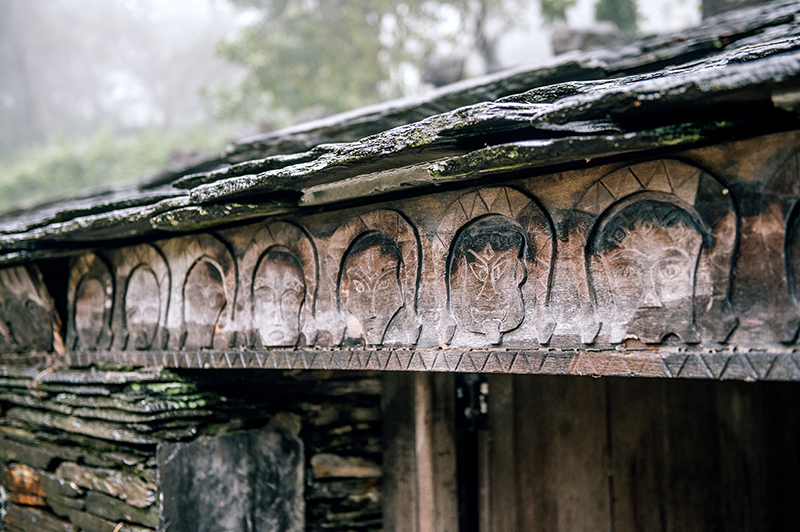

Paiwan stone slab houses have their backs towards the mountain, which creates a close connection between the slate and the soil. This allows the house to sway when the mountain moves during an earthquake and not collapse. The same goes for slate steps, which are built into the hillside to allow water to flow freely, and prevent the growth of moss.
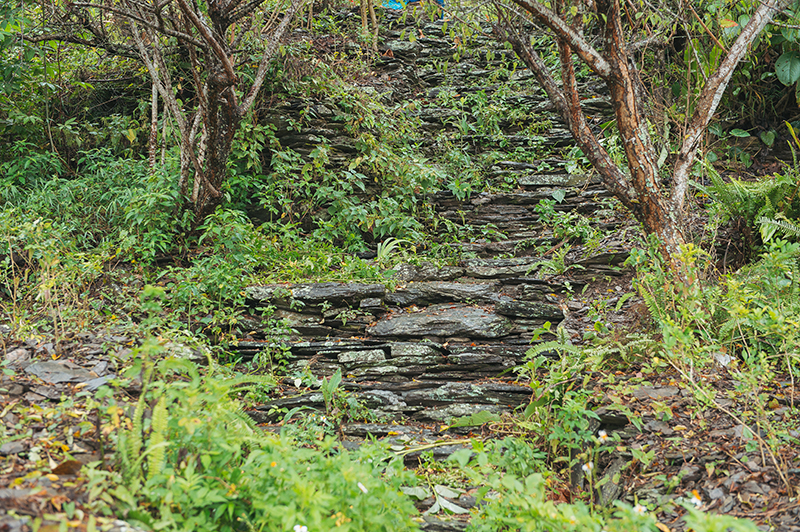

Large stones or other heavy objects are placed on the roof to prevent wind from blowing the slate away. Some communities will stack large white rocks on the roof that look like skulls from a distance. This leads enemies to think the residents are skillful head hunters, and serves as a deterrent.
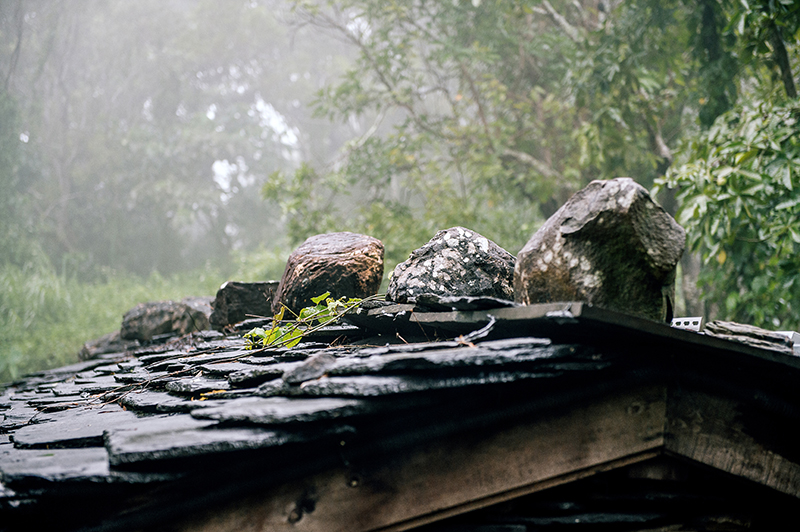

Before Japanese colonization, the community’s medical or public activities would take place in front of the community leader’s home. Only after Japanese rule were public spaces set aside for public events.
In the past, weddings were also held in front of the community leader’s house. A swing would be erected for an important, traditional Paiwan wedding ritual. Costumes representing the family’s social status would be hung on the swing, as would knives, symbolizing the community leader’s right to collect agricultural taxes, and guns, symbolizing the community leader’s right to collect hunting taxes.

Burning fires are important to indigenous people. Smoke can keep insects from eating wood, and also lets neighbors know someone is inside. If smoke isn’t rising from a home for long enough, people will wonder if the resident is ill.
Animals’ lower jaws are hung above the fire, while upper jaws are placed somewhere else. This is because the lower jaws are meatier. Community members smoke meat over the fire to tell their ancestors, “our hunt was successful, and we share it with you,” and to let the animals’ spirits rest in peace.
Without the maintenance provided by smoke, unoccupied stone slab houses will collapse in about a year.
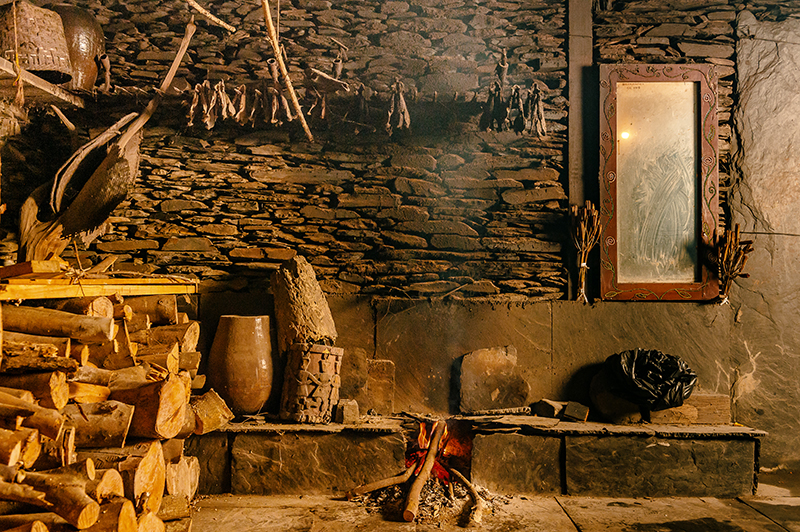

The elderly are important family members who are valued for their wisdom. They sleep in the safest spot furthest from the door, while young men sleep near the door for defense. Ancestors are buried inside the house in a squatting position near the fire.

The ancestral pillar is an important structure in the stone slab house and a place reserved for the head of the household. Only the eldest son may sit here for discussions with family members. The family head will invite a priest to perform a divination in front of the post before going to war, negotiations, or hunting.
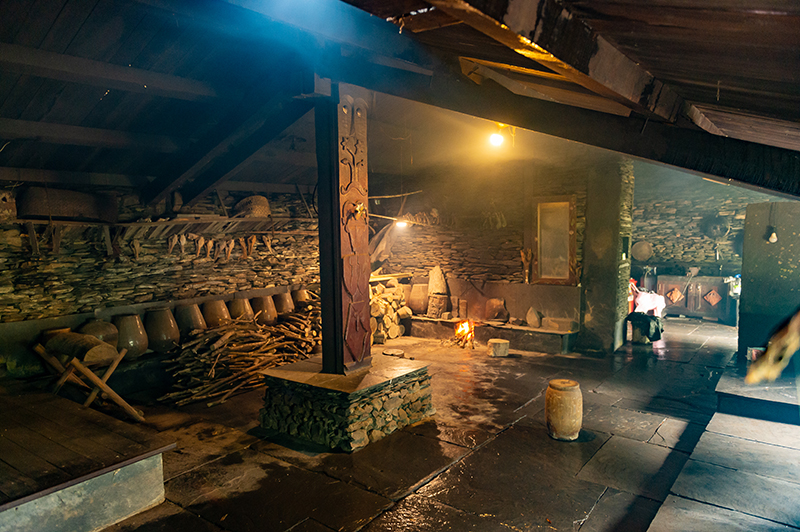
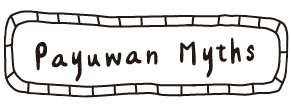

The Payuwan and Qucapungan used to be hostile to each other. It is said that on a headhunting trip to Payuwan, the Qucapungan were provoked by six human figures near the border between the two communities. When spears were thrown and arrows shot at these six people, only the clang of projectiles hitting stone was heard; the attackers had turned to stone. Ever since, the Payuwan people believe the six stone soldiers are there to protect the community from invasion.
Even today, one large and five smaller stones sit in Payuwan community’s place of origin. These rocks are different from the shale found nearby, rather, they are made of sandstone usually found in rivers.
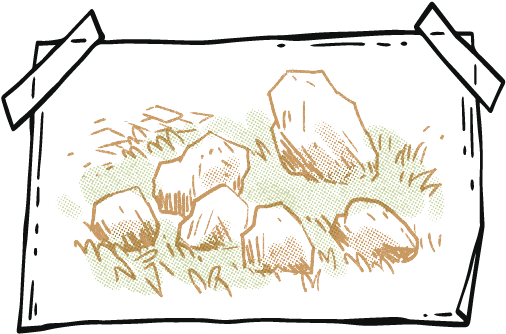

Legend has it that a divine man named Rupaliyan lived in Payuwan Community. During a drought, the people had no water to drink and turned to Rupaliyan. When Rupaliyan poked his walking stick into the hill, an endless stream of water flowed from the hole. People today believe this to be the Lion King Waterfall. A large pool can be found under the waterfall, but hole from which the water flows is very small.
Later, when the Payuwan moved from their place of origin, Rupaliyan was no longer seen. People believe Rupaliyan left his walking stick in front of the community leader’s house. A tilted stone post can still be found there today, planted into the ground in Payuwan’s place of origin. The post and six stone soldiers are all made of the same sandstone.
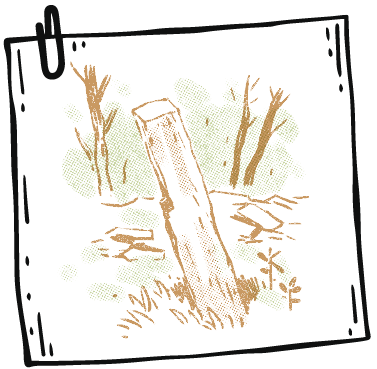

Legend has it that the distance between heaven and earth used to be so short that people had to lower their bodies not to hit the sky. One family that was husking millet could no longer stand the daily back pain caused by bending over, and propped up the sky with a pestle. People have had more living space ever since.
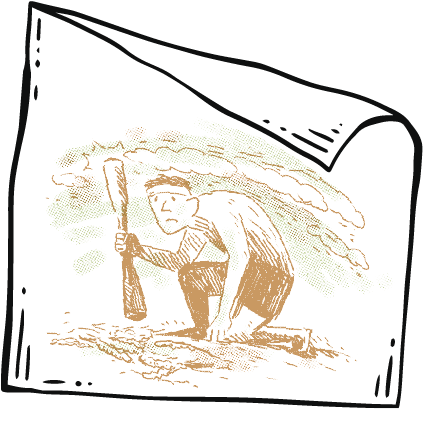

Long ago the world was divided into parts: one above ground, another other below. Under the ground could be found water, farms, and crops, but the land above ground was dark and barren. Legend has it that there was a couple from these two different worlds. The wife was from the underground, but when she moved above ground to be married she missed the underground foods very much. One day when visiting the underground she decided to hide millet seeds, red quinoa, taro, tree beans, and azuki beans in her nails, ears and nostrils, toes, buttocks, and genitals and take the seeds above ground.
Between the underground and above was a stone portal that opened at certain times. One time when the wife, who was very pregnant, was about to cross between the two worlds, she got stuck. There she turned into a parasol leaf tree, and that’s why the tree’s sap is blood red.
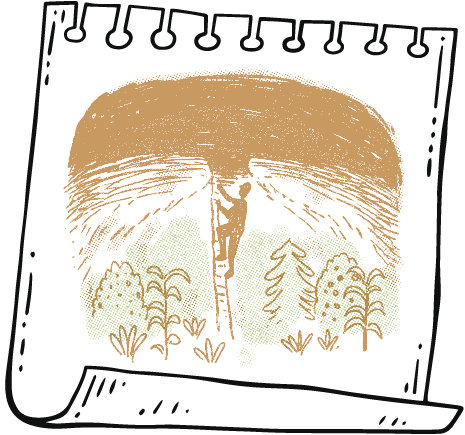
 Because of where the wife hid the foods, they all have special flavors.
Because of where the wife hid the foods, they all have special flavors.

There once was a family where the father was often away for work. When the mother went to work in the fields, she would take her two boys up the mountain and sit them under a tree. But when the two brothers were hungry and crying, the mother ignored them. She even took a sweet potato, their only food, climbed a tree, and only threw down the peel for the brothers to eat. She fell asleep after finishing her meal, but when she woke up, the brothers were nowhere to be found.
At first, the mother wasn’t bothered. She didn’t even look for her children until their father came home and saw that the brothers were missing. They split up to search for the children, but the father found that the boys had turned into birds flying in the sky. The birds told the father not to worry about them. Heartbroken, the father returned home to confront his wife. He didn’t expect to find that, out of grief, the mother had turned into a rat and hid. The father was furious. “If you leave this house again, don’t ever come back!” Ever since, the community uses rat partitions in barns to prevent the selfish mother rat from returning to steal food.

 Paiwan origin stories are quite colorful. Ours is that the Sun and the Moon laid eggs in pottery jars, which were guarded by the hundred pacer snake to ensure our safe birth. So when we see a hundred pacer we aren’t afraid. We don’t hit them, kill them, or scare them away. The hundred pacer snake is our guardian angel.
Paiwan origin stories are quite colorful. Ours is that the Sun and the Moon laid eggs in pottery jars, which were guarded by the hundred pacer snake to ensure our safe birth. So when we see a hundred pacer we aren’t afraid. We don’t hit them, kill them, or scare them away. The hundred pacer snake is our guardian angel.




